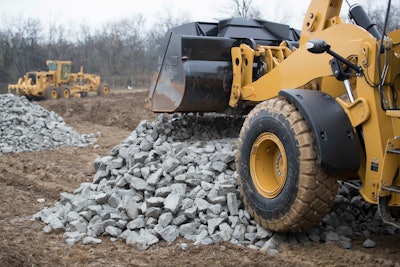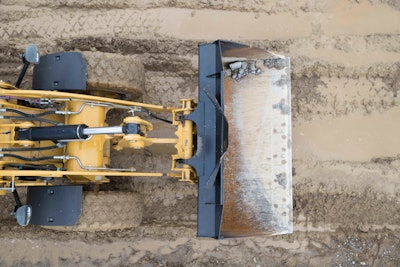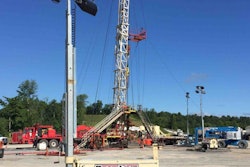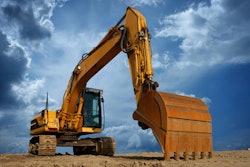
Let’s begin with two obvious facts: One, heavy-duty vehicles are vital to completing any construction, and two, the tires on those vehicles are the most important piece of equipment on any job site. The heavy-duty vehicles required for off-the-road work are unlike any other machines found in the field and make the rugged and challenging work possible. These vehicles require tires that can keep up with demanding work and operate flawlessly under extreme pressure because if they can’t, job sites would be at a standstill.
With the advancement of technology, tire manufacturers have designed products that not only handle the pressure but thrive in it. Using years of data acquired through tire monitoring and simulation tools, engineers have the power to see what design tweaks need to be made to improve tire performance and operator comfort. The insights gained from these technologies have paved the way for tires to become “smarter”, expanding the options at the disposal of engineers to bring more efficiency, safety, and productivity to construction sites.
Reliability
Before you dive into manufacturing a new tire, it is important to answer this question: what is at stake if a piece of equipment gets a flat tire? Construction teams work on tight deadlines and rely heavily on equipment to maintain schedules. If a wheel loader experiences a problem and needs to be shut down for inspection, the project is likely to get behind schedule and new costs may arise. To ensure neither problem surfaces, reliable tires are key.
There are numerous ways to address reliability through tire design and a lot of designs are determined by the type of equipment and the type of work. However, with every new tire product brought to market, you will find common characteristics such as durability, traction, and versatility at the center of it all. It is through these themes that engineers are dreaming up new ideas to bring elevated levels of tire reliability to construction sites.  For example, construction tires are manufactured with a more durable, specially compounded rubber to create an outer tread with enhanced cut and chip resistance.Bridgestone Americas
For example, construction tires are manufactured with a more durable, specially compounded rubber to create an outer tread with enhanced cut and chip resistance.Bridgestone Americas
Durability
Tire durability is obviously needed on a construction site because of what heavy-duty equipment is required to do. Yet, the emphasis on this characteristic should never be understated. As machines have evolved to provide operators with more comfort, efficiency, and productivity, tires have needed to evolve as well. A construction tire has become so much more complex than just rubber and air. With the help of technology, engineers have developed layer after layer of materials, each with a dedicated purpose to bring strength and durability to the tire.
For example, construction tires are manufactured with a more durable, specially compounded rubber to create an outer tread with enhanced cut and chip resistance. Underneath the tread, multiple belts are layered on top of one another to add more protection near the exterior against cuts and punctures. Depending on the tire, these belts are made from rubber-coated steel or fabric. Modern premium construction tires have also leaned into the use of steel wire and cords to help create a sturdy foundation for the outer tread and strong anchor points for the tire’s casing.
Traction
A tire with excellent traction is critical for any construction site because of the uncertain ground typically encountered by these fleets. Traction innovation has been introduced to the construction industry through the abundance of tire options manufacturers have brought to market to fit each application. There is no one-size-fits-all solution and tire manufacturers have focused efforts into creating tires for exactly what the vehicle needs. To understand a tire’s traction, you need to look at the tread pattern design and casing structure. For example, a dump truck may want a direction tread pattern to assist with fuel efficiency because of the miles driven to remove debris from job sites, whereas a loader may want a non-directional tread pattern to help drive over uneven surfaces. In both cases, the tread pattern enhances the traction the vehicle will receive based on its function.
With the help of modern technologies, engineers have been able to take durability a step further and develop protection features in a tire’s tread that help meet the specific needs of on-site equipment. Take a loader, for example — loaders are among the most common pieces of machinery used in construction worldwide. The tires being developed for loaders need wide shoulder grooves to allow operators to move with confidence on wet, muddy, and challenging terrain. Like the use of durable rubber, these design choices help minimize damage and fight against tears and cuts. The tread for loader tires must also be deep to drive over all types of landscapes. To ensure nothing gets stuck within the deep tread, engineers utilize stone rejector platforms for the gaps to prohibit materials from being lodged within the tread. All five of these innovative design features allow loaders to drive over any surface comfortably with ease and play integral roles in protecting the health of the tire.
Versatility
Versatility is the final characteristic of construction tires that tire manufacturers have worked hard to advance. Over time, construction equipment has become more streamlined and designed to bring more convenience to job sites. The same goes for tires. With many new tires brought to market, it is becoming known that the tires are compatible with multiple applications. For example, it is common for loaders and graders to use the same tire due to similar operating conditions. This may not seem like a major benefit, but for construction fleets that perform a lot of work with these two types of machines, buying one type of tire that provides optimal performance on both is appealing. It offers additional flexibility at job sites if a tire on one vehicle must be retired and it allows customers to minimize their tire inventory.
A tire’s versatility also relies on its adaptability. Construction sites are challenging and unpredictable at times, throwing new elements at construction crews constantly. Having tires that can adjust to new conditions without diminishing the quality of performance is crucial to overcoming obstacles and staying on schedule. With the help of modern technologies such as tire sensors, engineers can acquire real-time data from tires when in service on a job site. The constant delivery of up-to-date insights helps better understand what is needed out of tires in certain elements. By combining real-time historical and simulation insights into one place, engineers can make better-informed decisions and design better tires that remove unpredictable situations from job sites.
The construction industry is constantly striving for better efficiency, productivity, and safety with the help of advanced equipment — particularly tires. Tire engineers have been able to harness the available data to design tires that are more durable, versatile, and have optimized traction. This has been possible due to their innovative work. The construction industry confidently relies on technology to fuel its growth. This reliance will certainly lead to a continuous stream of innovations in the future.

















